News
Tesla releases Master Plan, Part Deux
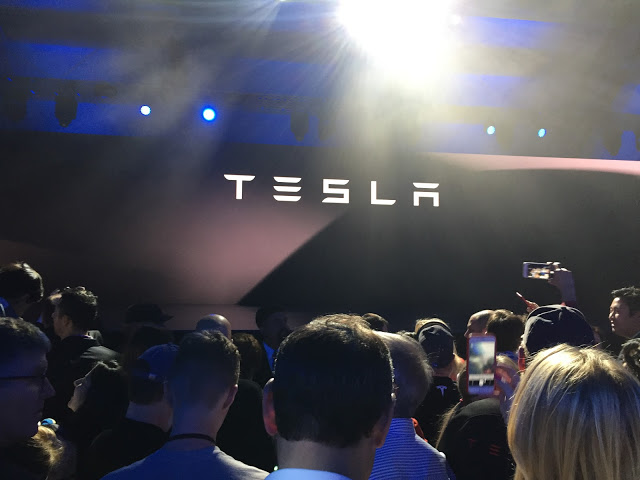
Nearly a decade after Elon Musk penned Tesla’s first Secret Master Plan, the sleepless CEO has released Part Deux of its plans for world change by creating a means for sustainable transportation and storage systems for renewable energy. Except this one isn’t so secret anymore.
Extending upon the company’s original 5-step plan to,
- Build a sports car
- Use that money to build an affordable car
- Use that money to build an even more affordable car
- Provide zero emission electric power generation options
- Don’t tell anyone about the plan
the new Master Plan largely boils down to an expansion of its fleet of vehicles to cover all segments, combining Tesla with SolarCity and creating a ride sharing service.
The plan calls for:
- Create stunning solar roofs with seamlessly integrated battery storage
- Expand the electric vehicle product line to address all major segments
- Develop a self-driving capability that is 10X safer than manual via massive fleet learning
- Enable your car to make money for you when you aren’t using it
Tesla Master Plan, Part Deux
The first master plan that I wrote 10 years ago is now in the final stages of completion. It wasn’t all that complicated and basically consisted of:
- Create a low volume car, which would necessarily be expensive
- Use that money to develop a medium volume car at a lower price
- Use that money to create an affordable, high volume car
And… - Provide solar power. No kidding, this has literally been on our website for 10 years.
The reason we had to start off with step 1 was that it was all I could afford to do with what I made from PayPal. I thought our chances of success were so low that I didn’t want to risk anyone’s funds in the beginning but my own. The list of successful car company startups is short. As of 2016, the number of American car companies that haven’t gone bankrupt is a grand total of two: Ford and Tesla. Starting a car company is idiotic and an electric car company is idiocy squared.
Also, a low volume car means a much smaller, simpler factory, albeit with most things done by hand. Without economies of scale, anything we built would be expensive, whether it was an economy sedan or a sports car. While at least some people would be prepared to pay a high price for a sports car, no one was going to pay $100k for an electric Honda Civic, no matter how cool it looked.
Part of the reason I wrote the first master plan was to defend against the inevitable attacks Tesla would face accusing us of just caring about making cars for rich people, implying that we felt there was a shortage of sports car companies or some other bizarre rationale. Unfortunately, the blog didn’t stop countless attack articles on exactly these grounds, so it pretty much completely failed that objective.
However, the main reason was to explain how our actions fit into a larger picture, so that they would seem less random. The point of all this was, and remains, accelerating the advent of sustainable energy, so that we can imagine far into the future and life is still good. That’s what “sustainable” means. It’s not some silly, hippy thing — it matters for everyone.
By definition, we must at some point achieve a sustainable energy economy or we will run out of fossil fuels to burn and civilization will collapse. Given that we must get off fossil fuels anyway and that virtually all scientists agree that dramatically increasing atmospheric and oceanic carbon levels is insane, the faster we achieve sustainability, the better.
Here is what we plan to do to make that day come sooner:
Integrate Energy Generation and Storage
Create a smoothly integrated and beautiful solar-roof-with-battery product that just works, empowering the individual as their own utility, and then scale that throughout the world. One ordering experience, one installation, one service contact, one phone app.
We can’t do this well if Tesla and SolarCity are different companies, which is why we need to combine and break down the barriers inherent to being separate companies. That they are separate at all, despite similar origins and pursuit of the same overarching goal of sustainable energy, is largely an accident of history. Now that Tesla is ready to scale Powerwall and SolarCity is ready to provide highly differentiated solar, the time has come to bring them together.
Expand to Cover the Major Forms of Terrestrial Transport
Today, Tesla addresses two relatively small segments of premium sedans and SUVs. With the Model 3, a future compact SUV and a new kind of pickup truck, we plan to address most of the consumer market. A lower cost vehicle than the Model 3 is unlikely to be necessary, because of the third part of the plan described below.
What really matters to accelerate a sustainable future is being able to scale up production volume as quickly as possible. That is why Tesla engineering has transitioned to focus heavily on designing the machine that makes the machine — turning the factory itself into a product. A first principles physics analysis of automotive production suggests that somewhere between a 5 to 10 fold improvement is achievable by version 3 on a roughly 2 year iteration cycle. The first Model 3 factory machine should be thought of as version 0.5, with version 1.0 probably in 2018.
In addition to consumer vehicles, there are two other types of electric vehicle needed: heavy-duty trucks and high passenger-density urban transport. Both are in the early stages of development at Tesla and should be ready for unveiling next year. We believe the Tesla Semi will deliver a substantial reduction in the cost of cargo transport, while increasing safety and making it really fun to operate.
With the advent of autonomy, it will probably make sense to shrink the size of buses and transition the role of bus driver to that of fleet manager. Traffic congestion would improve due to increased passenger areal density by eliminating the center aisle and putting seats where there are currently entryways, and matching acceleration and braking to other vehicles, thus avoiding the inertial impedance to smooth traffic flow of traditional heavy buses. It would also take people all the way to their destination. Fixed summon buttons at existing bus stops would serve those who don’t have a phone. Design accommodates wheelchairs, strollers and bikes.
Autonomy
As the technology matures, all Tesla vehicles will have the hardware necessary to be fully self-driving with fail-operational capability, meaning that any given system in the car could break and your car will still drive itself safely. It is important to emphasize that refinement and validation of the software will take much longer than putting in place the cameras, radar, sonar and computing hardware.
Even once the software is highly refined and far better than the average human driver, there will still be a significant time gap, varying widely by jurisdiction, before true self-driving is approved by regulators. We expect that worldwide regulatory approval will require something on the order of 6 billion miles (10 billion km). Current fleet learning is happening at just over 3 million miles (5 million km) per day.
I should add a note here to explain why Tesla is deploying partial autonomy now, rather than waiting until some point in the future. The most important reason is that, when used correctly, it is already significantly safer than a person driving by themselves and it would therefore be morally reprehensible to delay release simply for fear of bad press or some mercantile calculation of legal liability.
According to the recently released 2015 NHTSA report, automotive fatalities increased by 8% to one death every 89 million miles. Autopilot miles will soon exceed twice that number and the system gets better every day. It would no more make sense to disable Tesla’s Autopilot, as some have called for, than it would to disable autopilot in aircraft, after which our system is named.
It is also important to explain why we refer to Autopilot as “beta”. This is not beta software in any normal sense of the word. Every release goes through extensive internal validation before it reaches any customers. It is called beta in order to decrease complacency and indicate that it will continue to improve (Autopilot is always off by default). Once we get to the point where Autopilot is approximately 10 times safer than the US vehicle average, the beta label will be removed.
Sharing
When true self-driving is approved by regulators, it will mean that you will be able to summon your Tesla from pretty much anywhere. Once it picks you up, you will be able to sleep, read or do anything else enroute to your destination.
You will also be able to add your car to the Tesla shared fleet just by tapping a button on the Tesla phone app and have it generate income for you while you’re at work or on vacation, significantly offsetting and at times potentially exceeding the monthly loan or lease cost. This dramatically lowers the true cost of ownership to the point where almost anyone could own a Tesla. Since most cars are only in use by their owner for 5% to 10% of the day, the fundamental economic utility of a true self-driving car is likely to be several times that of a car which is not.
In cities where demand exceeds the supply of customer-owned cars, Tesla will operate its own fleet, ensuring you can always hail a ride from us no matter where you are.
So, in short, Master Plan, Part Deux is:
Create stunning solar roofs with seamlessly integrated battery storage
Expand the electric vehicle product line to address all major segments
Develop a self-driving capability that is 10X safer than manual via massive fleet learning
Enable your car to make money for you when you aren’t using it
News
Tesla counters Saudi Arabia charging concerns with quick response
Tesla launched 24 new Superchargers in Saudi Arabia just one day after concerns arose regarding charging availability.
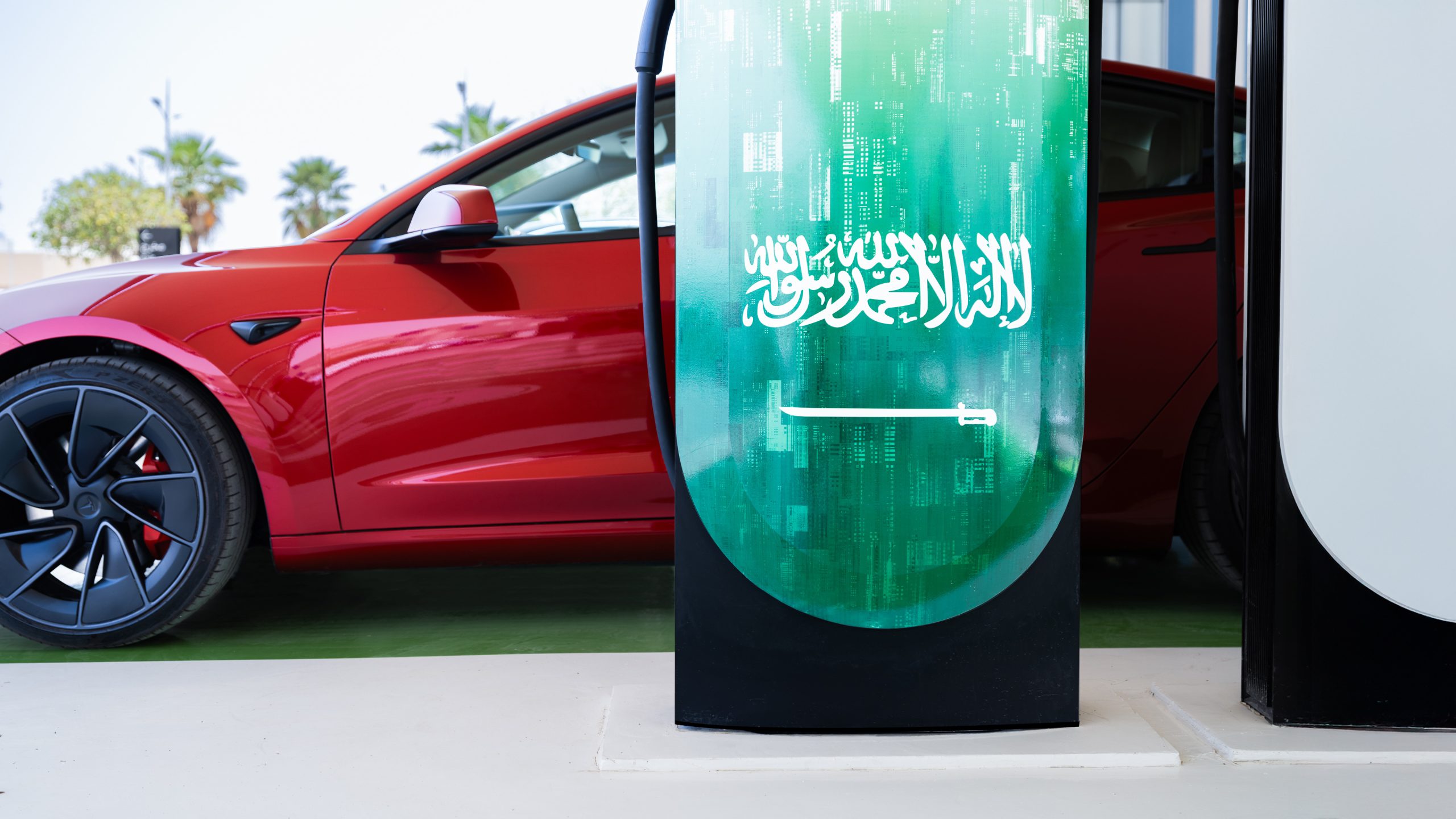
Tesla has countered concerns regarding the availability of electric vehicle chargers in Saudi Arabia with a quick response as it launched 24 Superchargers in the country’s most populated cities just one day after launching deliveries in the country.
Tesla announced that it was launching deliveries of the Cybertruck in Saudi Arabia, Qatar, and the United Arab Emirates on Thursday.
However, there were grave concerns about the availability of EV charging in the region, as Tesla had not built any Superchargers in Saudi Arabia, and there were only a small number built to begin with by other companies.
Tesla confirms Cybertruck will make its way out of North America this year
A report from Reuters earlier this week highlighted those challenges and concerns surrounding EV charging:
“As of 2024, Saudi Arabia had just 101 EV charging stations, compared with 261 in neighbouring United Arab Emirates, a country with a third the population, data from Statista based on Electromaps showed.
Most are in major cities, making long journeys across desert highways unfeasible.
‘I think charging is probably one of the main, if not the main, point of concern,’ said Carlos Montenegro, BYD’s general manager in Saudi Arabia, adding Saudi drivers clock up many more kilometres each year than in other markets.”
However, Tesla quickly responded by announcing the construction of 24 new Superchargers in Saudi Arabia:
🚨 Tesla has answered concerns about charging with its first Superchargers in Saudi Arabia!
24 total stalls is a great start! https://t.co/stQ5Q16GZK pic.twitter.com/rqTfjrivW3
— TESLARATI (@Teslarati) April 11, 2025
The chargers are installed in eights – Eight in Riyadh, eight in Jeddah, and eight in Dammam. However, these are not the only charging piles that Tesla plans to build in the Kingdom. It also announced plans to establish more in those three cities later this year, additional builds in the cities of Taif, Medina, and Buraydah next year, and the development of the Jeddah-Riyadh-Dammam highway.
This was a quick answer for the skeptics who were worried about charging, which was a valid concern. Tesla will continue to expand its Supercharger presence in the Middle East as it begins to deliver more vehicles. For now, this small rollout is a great start.
News
Tesla released the Cybertruck RWD to make the AWD look like a deal
Cybertruck LR RWD is effectively a $69,990 pickup that does not have 120V and 240V power outlets on its bed or 120V outlets in the cabin.
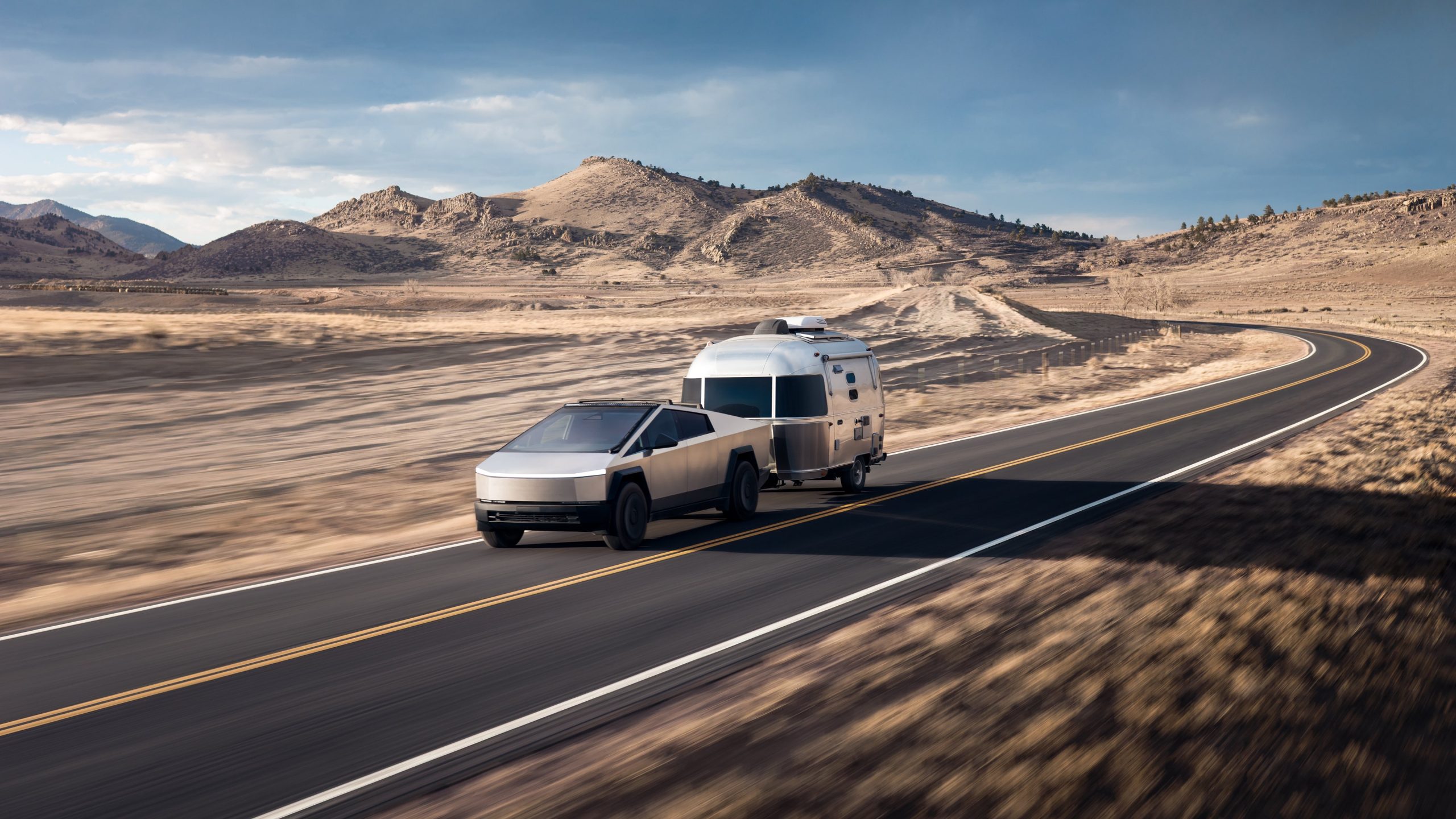
Tesla released the Cybertruck Long Range Rear Wheel Drive (LR RWD) recently, and it quickly received mixed reactions from the electric vehicle community. While the truck was praised for its long range, many argued that it was far too expensive due to the long list of features that it is missing compared to the Cybertruck All Wheel Drive (AWD), the mid-range variant of the all-electric pickup truck.
A look at the Cybertruck LR RWD’s pricing and features suggests that Tesla designed and priced the vehicle to push more buyers to opt for the Cybertruck AWD instead.
So Much Missing
The Cybertruck LR RWD costs $10,000 less than the Cybertruck AWD, but it is substantially less equipped compared to its mid-range counterpart. While the Cybertruck LR RWD’s slower 0-60 mph time, lower towing and payload capacity, textile seats, and fewer speakers are understandable, missing features such as the lack of air suspension, HEPA filter, and active noise cancellation make the vehicle truly a stripped down version of the all-electric pickup truck.
Considering that it is the most affordable Cybertruck available today, it would be fair to expect the vehicle to be geared for consumers who truly use their trucks for work. However, the Cybertruck LR RWD seems like a pretty expensive and under-equipped work truck, as it is effectively a $69,990 pickup that does not have 120V and 240V power outlets on its bed or 120V outlets in the cabin. It doesn’t even have otherwise basic Cybertruck features like the rear light bar, which is part of the pickup truck’s iconic, futuristic look.
Must Be Cheaper
The long list of missing features from the Cybertruck Long Range RWD has incited a lot of conversations among electric vehicle enthusiasts on social media, with some EV fans stating that the cost of the features that Tesla removed in the LR RWD seem to be worth far beyond $10,000. Others noted that with its (very) stripped-down nature, the Cybertruck Long Range Rear Wheel Drive should have been priced around $55,000, or at least closer to Elon Musk’s previous comments about electric pickup truck prices in the past.
Back in 2019, Elon Musk noted during an interview on the Ride the Lightning podcast that he believes consumers should be able to purchase a decent electric pickup truck for less than $50,000. “You should be able to buy a really great truck for $49k or less,” Musk stated then.
The Cybertruck was ultimately unveiled in November 2019 with a starting price of $39,990. If one were to adjust for inflation, Elon Musk’s sub-$50,000 Cybertruck price estimate would be worth $62,811 today, which is roughly the price of the Cybertruck LR RWD with the federal tax credit. For context, the Cybertruck’s $39,990 base price during its November 2019 unveiling is worth $50,249 today if adjusted for inflation.
A Boost to Cybertruck AWD
One would not be faulted to speculate that Tesla released the Cybertruck Long Range Rear Wheel Drive as a way to encourage customers to purchase the more expensive Cybertruck All Wheel Drive. For just $10,000 more, after all, customers would be getting a substantially better-equipped vehicle with better performance and far more utility.
It remains to be seen how well the Cybertruck LR RWD would sell, though considering its stripped-down nature, there seems to be a chance that the variant would follow the same path as the $35,000 base Model 3 Standard Range RWD, which was briefly sold but eventually retired due to low orders. What the $35,000 Model 3 did, however, was push a lot of sales of the Model 3 Standard Range Plus, which ultimately became one of Tesla’s volume sellers and is still in production today simply as the Model 3 RWD.
News
RBC cuts Rivian price target to $10 ahead of earnings report
Rivian hit 8.6K deliveries in Q1 2025 and reaffirmed targets. RBC cut its price target, all eyes are on May 6 for Rivian’s earnings call.
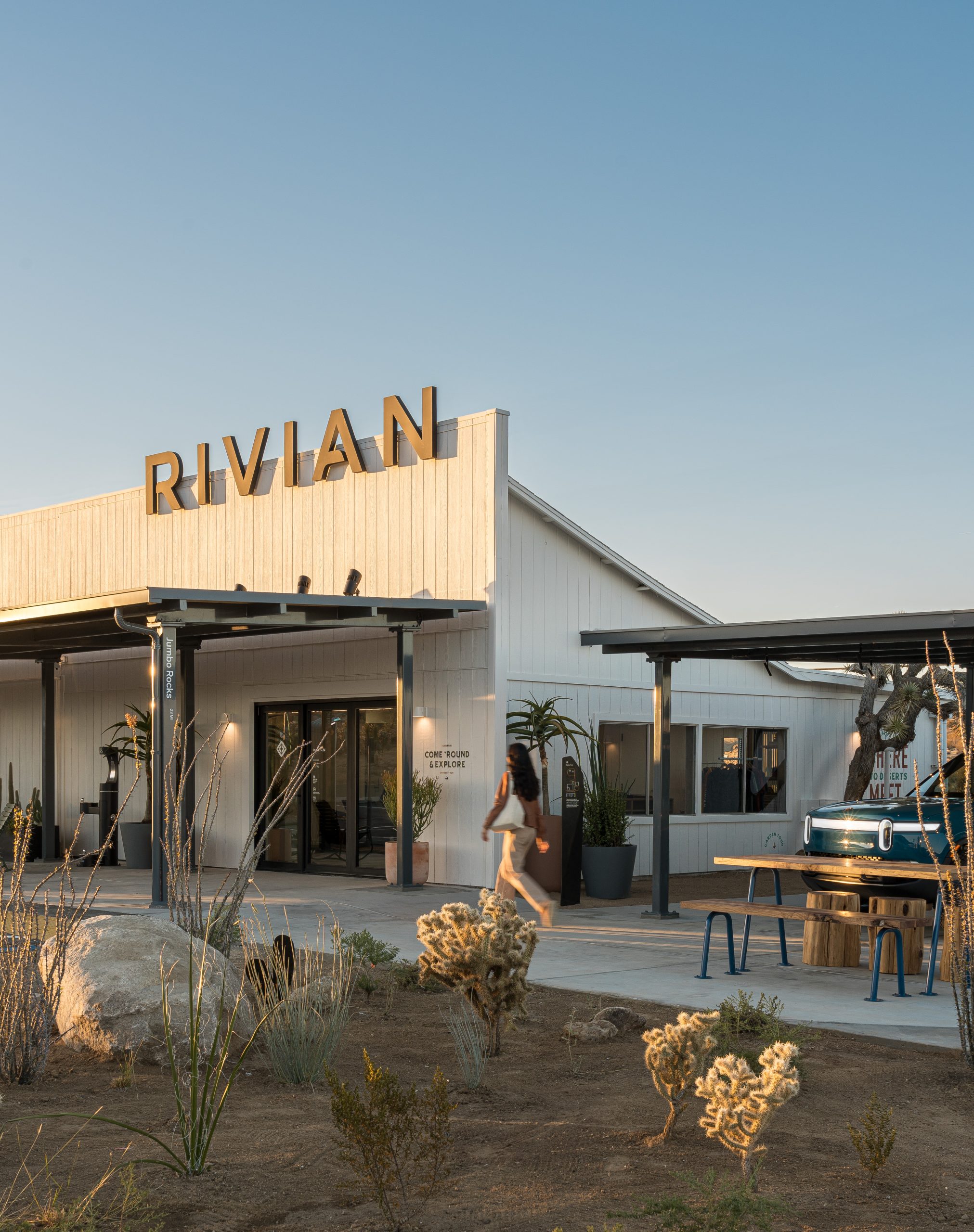
RBC Capital cut its Rivian price target to $10 ahead of the automaker’s Q1 earnings report.
RBC Capital dropped its price target for Rivian Automotive from $12 to $10 per share, sticking with a “Sector Perform” rating as it braces for the automaker’s first-quarter earnings. The firm’s new Rivian price target includes predictions for a March sales bump tied to looming tariffs, though RBC cautions that earnings may not fully reflect trade impacts.
Rivian produced 14,611 vehicles and delivered 8,640 in Q1 2025 at its Normal, Illinois plant. The company held steady on its full-year outlook, reaffirming its 2025 delivery guidance of 46,000 to 51,000. Rivian will release its first-quarter 2025 financial results on May 6 after market close.
RBC sees guidance shifts looming across the auto sector, possibly cutting estimates despite already lean consensus targets. It favors OEMs over suppliers amid macro jitters. The firm suggests tariff-free optimists could score big by betting on the “entire automotive group.”
According to GuruFocus, the average target price for Rivian is $14.54 with a high estimate of $23.00 and a low estimate of $6.10. Based on consensus recommendations from 31 brokerage firms, Rivian has a Hold rating on average.
The shadow of tariffs looms over the auto market, yet Rivian’s output holds firm against peers like Lucid, which face similar headwinds. RBC notes, “guidance in the auto sector could experience alterations,” signaling volatility ahead. Rivian’s Q1 haul—while solid—won’t fully decode trade effects, leaving investors eyeing May’s update for clarity on its EV trajectory.
-
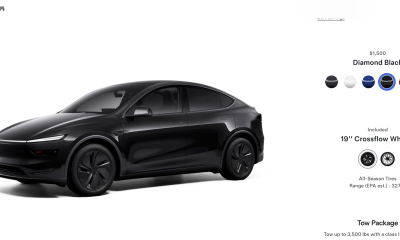
 News1 week ago
News1 week agoTesla rolls out new, more affordable trim of the Model Y Juniper in U.S.
-
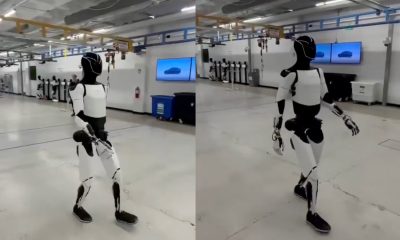
 News1 week ago
News1 week agoTesla shares Optimus’ improved walk in new update video
-

 News2 weeks ago
News2 weeks agoTesla US Gigafactories shields from Trump’s 25% Tariffs
-
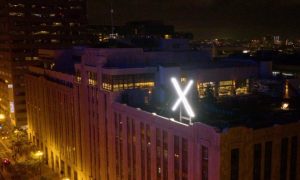
 Elon Musk2 weeks ago
Elon Musk2 weeks agoMusk says xAI has acquired X in $33 billion stock deal
-

 Elon Musk1 week ago
Elon Musk1 week agoTesla Germany reports 4,935 units sold in Q1 2025
-
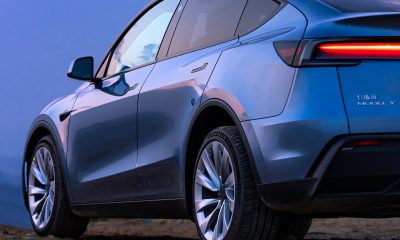
 Investor's Corner2 weeks ago
Investor's Corner2 weeks agoTesla (TSLA) shares company-compiled Q1 2025 delivery consensus
-
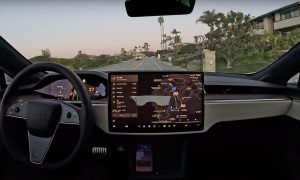
 News1 week ago
News1 week agoTesla expands Early Access Program (EAP) for early Full Self-Driving testing
-

 Elon Musk2 weeks ago
Elon Musk2 weeks agoNYC Comptroller moves to sue Tesla for securities violations








